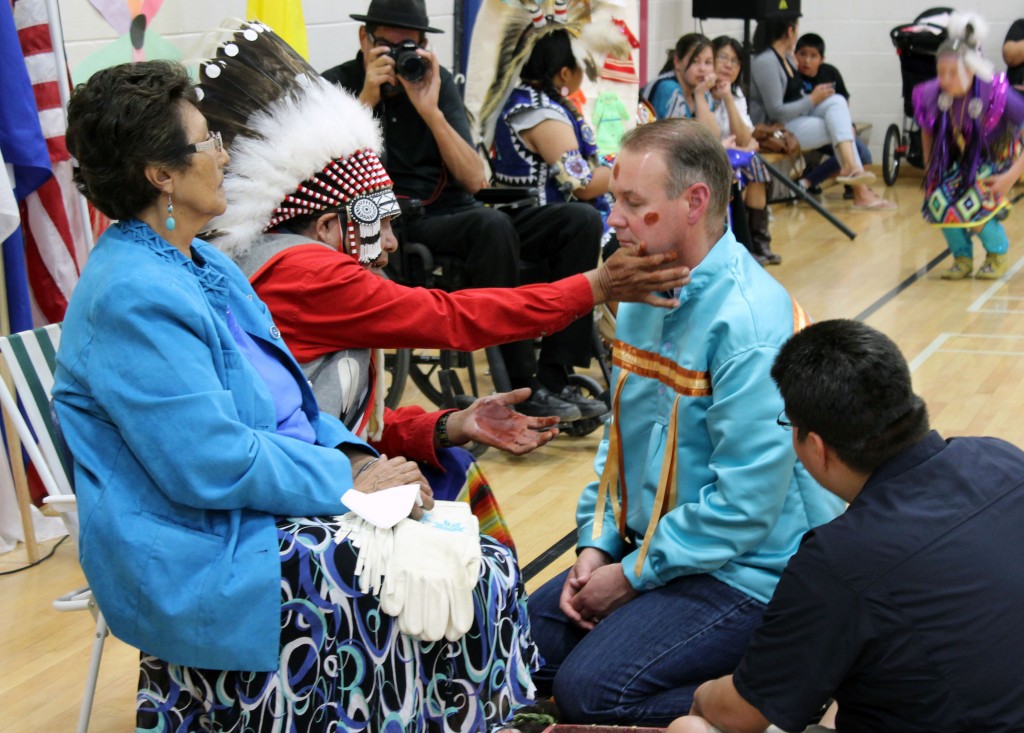I’m currently sitting in a hotel room in Red Deer, having just returned from RedCamp14– a local version of the edcamp model where participants exclusively drive the agenda. The Alberta School Boards’ Association Spring General Meeting begins on Sunday evening and so I thought I would come up a day early for the event. This is the third edcamp (Edmonton, Lethbridge & Red Deer) that I’ve experienced and each bring their own uniqueness to the table. Whether it is more conversational in its approach or more presentational, the edcamp model really focuses on professional choice in learning. It always brings together dedicated educators (voluntary on a Saturday) to discuss, learn and share important aspects of education. Regardless of your position in education, classroom teacher, superintendent or trustee, the learning is always relevant because you direct it, you vote with your feet. But as important as the learning is the passion that is apparent in the participants. As one of the participants shared with me at the end of the day, “I love coming to a place where everybody loves their job!” If you’ve not had a chance to experience an edcamp I would highly recommend it!
The regular board meeting in May began with a presentation from our Off-Campus Coordinator, Michelle Perron. Since taking on this program full-time in our three high schools, the growth and success has been exponential. Mrs. Perron has been exceptional at highlighting the Registered Apprenticeship Program (RAP) in our schools and has developed strong relationships with our business and industry communities. Her work has been so successful that she was recently presented with the 2014 Hilton Mierau Award.
The May meeting always includes the budget for the following school year. The budget is directed by the board’s strategic priorities as established through consultation with stakeholders and major input from our school leaders. It must also align with the business plan of Alberta Education. During my time as Superintendent of Schools, I have rarely conveyed joy in the budget process. There is always far more want than available resources and the 2014-15 operating budget is consistent with that in the areas of transportation and plant operations and maintenance. Those funding envelopes continue to be bare bones! However, it is certainly great news when I can communicate that we are anticipating a growth of 200+ students, bringing on a new school in the community of Bow Island and adding the equivalent of 15.26 FTE teachers to our system. It is certainly an exciting time in our HR world! The complete 2014-15 operating budget can be found here or check out the infographic for the highlights!
One of the greatest honours in my educational career was bestowed upon me on May 21st. I was truly blessed to have been honoured with a Blackfoot name, Natoo’minnii, meaning Sacred Wings. The naming ceremony was very powerful and was made even more special with the attendance of my wife Donna and my parents. I cannot express enough gratitude to all those involved in the day and especially to Kainai Board of Education- it was truly a blessing!
The last weeks of school will pass by quickly and before you know it, students and staff will be heading to a summer vacation that is well deserved. For some in our schools, this will be their last June in Holy Spirit as they take on new challenges or will soon enter the world of retirement. I would like to personally thank all those who are leaving for creating their own legacy and for being part of our own Holy Spirit legacy. Each of you deserve much gratitude for the work that you have done, often with little fanfare but always with care and compassion. May God bless each of you in your continued journey!

